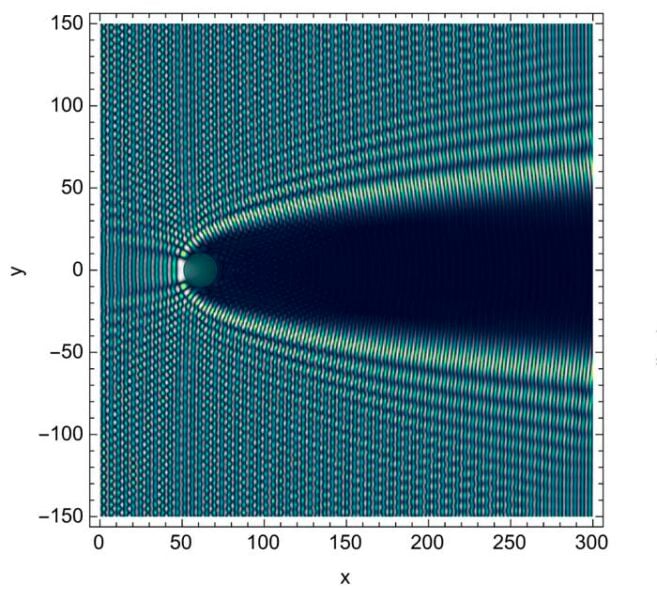Published in Physical Review Letters | Estimated reading time: 6 minutes
The Crab Nebula, located 6,000 light years from Earth, contains a unique pulsar that emits radio waves with an unexplained zebra-striped pattern. Since its discovery in 2007, this pattern has puzzled astronomers – until now.
Using principles from wave optics, physicist Mikhail Medvedev has shown that these stripes likely form when radio waves bend around the pulsar and interact with its surrounding plasma – the cloud of charged particles generated by the star’s intense magnetic field.
“If you have a screen and an electromagnetic wave passes by, the wave doesn’t propagate straight through,” explains Medvedev. “Waves bend around obstacles and interfere with each other, creating a sequence of bright and dim fringes due to constructive and destructive interference.”
The pulsar’s surrounding plasma affects this pattern in a unique way. “Low frequencies reflect at large radii, casting a bigger shadow, while high frequencies create smaller shadows, resulting in different fringe spacing,” Medvedev notes.
This discovery opens up new possibilities for studying pulsars. “By analyzing the fringes, we can deduce the density and distribution of plasma in the magnetosphere, essentially creating an image or performing tomography of the neutron star’s magnetosphere,” says Medvedev.
Glossary
- Pulsar
- A rapidly rotating neutron star that emits beams of electromagnetic radiation, like a cosmic lighthouse.
- Plasma
- A state of matter consisting of charged particles (electrons and positrons) created by intense magnetic fields.
- Magnetosphere
- The region around a celestial object where its magnetic field dominates the surrounding space.
Quiz
How far is the Crab Nebula from Earth?
Answer: 6,000 light years
What causes the zebra pattern in the pulsar’s radio waves?
Answer: The bending and interference of radio waves as they pass through the pulsar’s surrounding plasma
What frequency range shows the zebra pattern?
Answer: Between 5 and 30 gigahertz
How old is the Crab Nebula?
Answer: About 1,000 years old (it appeared in 1054)
Enjoy this story? Subscribe to our newsletter at scienceblog.substack.com


